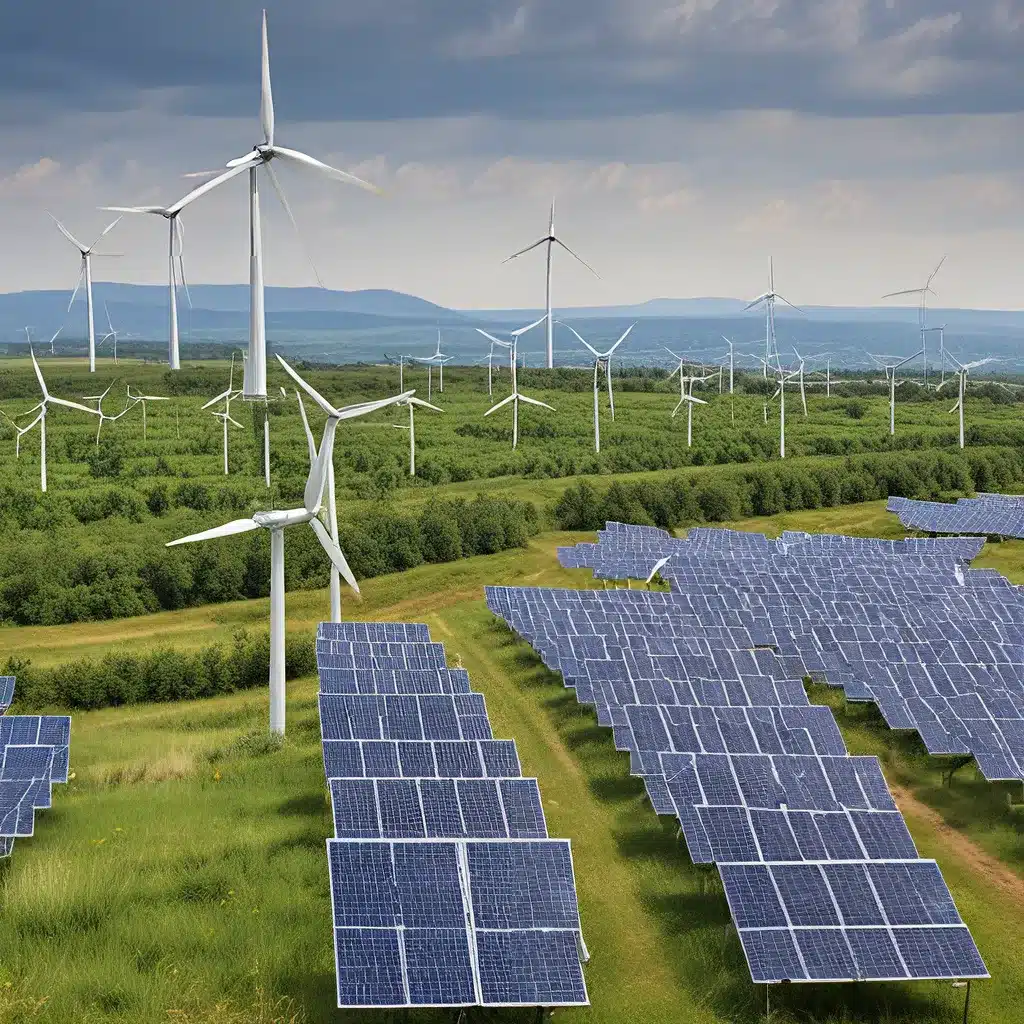
The renewable energy sector has been hailed as a crucial player in the global fight against climate change, offering a promising path towards a sustainable energy future. However, the journey to widespread adoption of renewable energy solutions has not been without its challenges. One of the primary obstacles lies in the complex web of policies and regulations that govern this rapidly evolving industry.
The Policy and Regulatory Landscape: A Patchwork of Complexity
As I delve into the intricacies of the renewable energy sector, I can’t help but feel a sense of frustration at the lack of regulatory harmonization. It’s as if we’re navigating a labyrinth of inconsistent policies, where each jurisdiction or level of government has its own unique set of rules and regulations. This policy fragmentation can create a dizzying array of obstacles for renewable energy project developers, making it a veritable minefield to secure the necessary approvals and financing.
One of the most significant challenges in this realm is the lack of clarity and stability in policies and regulations. Imagine trying to plan a long-term investment strategy when the rules of the game are constantly shifting beneath your feet. This uncertainty can be a major deterrent for potential investors, effectively stifling the growth and deployment of renewable energy projects.
Navigating the Permitting Maze
Another frustrating aspect of the renewable energy landscape is the complex and time-consuming permitting process. Obtaining the necessary approvals from multiple regulatory authorities, such as environmental agencies, grid operators, and local governments, can be a daunting task. The sheer administrative burden of coordinating with these diverse entities often leads to delays and added costs, undermining the viability of renewable energy projects.
Imagine you’re a solar farm developer, eager to harness the power of the sun and contribute to a greener future. You’ve done your due diligence, secured the land, and even lined up financing. But then, you get bogged down in a seemingly endless bureaucratic maze, navigating through a labyrinth of paperwork, approvals, and interagency coordination. It’s enough to make even the most determined entrepreneur want to throw in the towel.
Grid Integration Challenges
But the challenges don’t stop there. Even when a renewable energy project is successfully developed, it must then contend with the integration into the existing power grid. In some cases, the local grid infrastructure simply lacks the capacity to accommodate the influx of renewable energy, forcing project developers to either scale back their ambitions or invest in costly upgrades.
Imagine a scenario where you’ve built a state-of-the-art wind farm, only to find that the local grid can’t handle the surge of clean energy it produces. It’s like having a high-performance sports car, but you’re stuck on a congested country road with no off-ramps in sight. The lack of investment in grid infrastructure can be a major bottleneck, hindering the widespread adoption of renewable energy solutions.
Incentivizing the Transition
Amidst these regulatory hurdles, the role of incentive schemes cannot be overstated. Mechanisms like feed-in tariffs, tax credits, and subsidies have proven to be crucial drivers in attracting investments and stimulating the growth of the renewable energy sector. However, the absence of adequate or consistent incentives can be a significant impediment, leaving project developers in a precarious position.
It’s as if we’re trying to build a house without the necessary tools. Imagine a world where the government suddenly decides to remove the tax credits for installing solar panels. Homeowners who had planned to go green would suddenly find themselves in a bind, forced to reconsider their investments. Consistent and predictable incentive structures are essential to creating a supportive environment for renewable energy projects.
Fostering International Collaboration
As I delve deeper into the challenges facing the renewable energy sector, I can’t help but wonder if the solution lies in international collaboration. Imagine a world where policymakers, regulators, and industry leaders come together to share best practices, lessons learned, and technological advancements. By harmonizing policies and standardizing regulations across borders, we could create a cohesive global environment that enables the seamless deployment of renewable energy projects.
I’ve been struck by the potential of knowledge-sharing and cross-border cooperation in this field. Imagine a scenario where a country struggling with grid integration challenges could learn from the successes and failures of its neighbors, adopting proven strategies to overcome their own infrastructure hurdles. This kind of collaborative approach could be a game-changer, unlocking the full potential of renewable energy on a global scale.
Towards a Sustainable Energy Future
As I reflect on the myriad challenges facing the renewable energy sector, I can’t help but feel a sense of both frustration and optimism. The policy and regulatory landscape may be a tangled web of complexities, but I believe that with a concerted effort, we can untangle this knot and pave the way for a more sustainable energy future.
By fostering regulatory harmonization, streamlining permitting processes, investing in grid infrastructure, and implementing consistent incentive schemes, we can create an enabling environment that attracts investments, accelerates project development, and drives the widespread adoption of renewable energy solutions.
And let’s not forget the potential of international collaboration. By sharing best practices and aligning our policies and regulations, we can unlock the full potential of renewable energy on a global scale, tackling the climate crisis head-on and ushering in a new era of clean, sustainable power.
As I mentioned earlier, our team at Firewinder is committed to being at the forefront of this renewable energy revolution. We’re constantly exploring innovative ways to overcome the regulatory and policy challenges that stand in the way of a more sustainable future. So, if you’re ready to embark on this journey with us, I encourage you to reach out and let’s collaborate to make a lasting impact.

